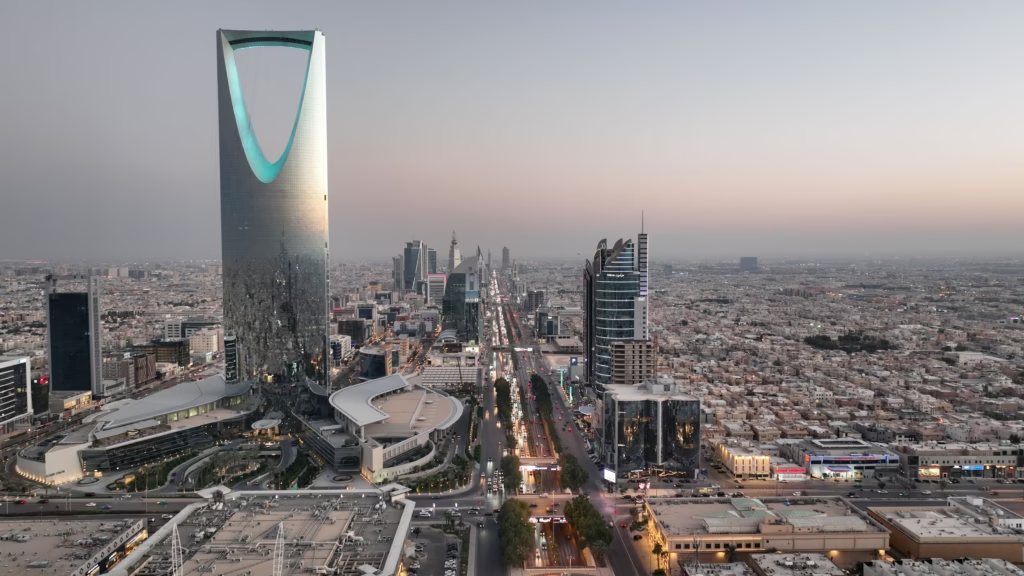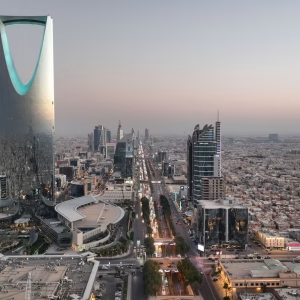Saudi Arabia GDP growth reached 3.4% in the first quarter of 2025, according to revised official data. This performance was better than the early forecast of 1.4%, showing that the Kingdom’s economy is bouncing back stronger than expected.
The new data, published by the General Authority for Statistics (GASTAT), reflects major improvements across oil, non-oil, and government sectors. The first-quarter results signal that the country’s Vision 2030 plan is making progress.
Oil Sector Bounces Back with Controlled Boost
Oil remains central to Saudi Arabia’s economy, and in Q1 2025, it helped power the country’s overall performance. The oil sector grew by 2.3% compared to the same time last year.

This growth came even though Saudi Arabia continues to reduce production under OPEC+ agreements. These voluntary cuts are aimed at supporting global oil prices, which have remained relatively stable through early 2025. Despite limited output, increased global demand and high prices brought in strong revenue.
Oil still makes up a large portion of the country’s GDP — over 40% — and it funds many of the Vision 2030 projects that are helping diversify the economy.
Non-Oil Sector Shines with Strong Expansion
Perhaps the biggest sign of long-term change is the 4.8% growth in Saudi Arabia’s non-oil activities. These include construction, real estate, tourism, transport, technology, and manufacturing.
This performance highlights how the country’s shift toward a more balanced economy is starting to work. Tourism, in particular, is becoming a powerful engine of growth. Saudi Arabia welcomed over 27 million tourists in 2024, and early numbers for 2025 show this trend continuing.
Large-scale projects like NEOM, Qiddiya, and Diriyah Gate have also helped expand the construction and services industries. These megaprojects are not just building infrastructure — they are creating jobs, attracting foreign investments, and reshaping the national economy.
Government Services Record a 4.4% Growth
The government sector grew by 4.4% in Q1 2025, reflecting a strong push to improve services such as health, education, public transport, and infrastructure.
Spending on social welfare programs, housing initiatives, and healthcare improvements has made a visible impact. The Kingdom is investing billions to upgrade hospitals, schools, and digital services to serve both its citizens and foreign residents.
This is not only helping boost economic numbers — it’s also improving everyday life for millions of people.
Vision 2030: Driving a Bold Economic Transformation

At the center of all this progress is Vision 2030, Saudi Arabia’s plan to diversify the economy and reduce dependence on oil. Launched in 2016 by Crown Prince Mohammed bin Salman, the initiative is guiding many of the investments seen across the country.
Vision 2030 focuses on:
- Building futuristic cities like NEOM
- Promoting entertainment and tourism
- Expanding renewable energy
- Attracting global companies to set up headquarters
- Empowering women and young Saudis in the workforce
These efforts are showing real results. The Vision is turning theory into action and helping Saudi Arabia move toward a more stable and modern economy.
Foreign Investments Pouring In
Another reason for the strong Saudi Arabia GDP growth is the rising foreign direct investment (FDI). In 2024, the country attracted over $30 billion in FDI, and that number is expected to rise even higher in 2025.
Major global companies in tech, healthcare, and logistics are partnering with local businesses. The Kingdom’s relaxed regulations, new visa rules, and large-scale economic zones are making it easier and more appealing for foreign businesses to set up operations.
The Riyadh Expo 2030, which was recently awarded to the Kingdom, is also expected to boost investment in hospitality, infrastructure, and tourism.
Job Creation and Workforce Growth
Saudi Arabia’s economy is creating thousands of new jobs across sectors like retail, aviation, hospitality, and entertainment. With more women entering the workforce and new training programs for young Saudis, the talent pool is growing fast.
The unemployment rate has steadily decreased, and the private sector is becoming a bigger employer than ever before. The government’s Saudization program, which encourages hiring local talent, is also contributing to workforce growth.
Consumer Spending and Business Confidence Rising
The strong GDP numbers are also backed by healthy consumer activity. With higher wages, more job opportunities, and better infrastructure, people are spending more on retail, travel, and services.
Saudi malls, restaurants, and entertainment venues have seen increased foot traffic. Events like the Saudi Seasons festivals and Formula 1 Grand Prix in Jeddah have brought in both local and international audiences — boosting business for hotels, transport, and vendors.
In addition, business confidence is improving. Small and medium enterprises (SMEs) are growing rapidly, with government-backed loans and digital support systems helping new businesses succeed.
Inflation Under Control, But Global Risks Remain
While the domestic outlook is positive, there are still external risks. Global economic uncertainty, conflict in nearby regions, and oil market volatility can all impact future performance.
So far, inflation in Saudi Arabia has remained under control, at around 1.8% in Q1 2025. This is due to government subsidies on key goods like fuel, housing support, and stable food supply chains.
Still, authorities are keeping a close eye on rising global interest rates, the pace of recovery in China and the US, and possible disruptions in energy markets.
Analysts Predict Strong Year Ahead

With a 3.4% growth start to the year, experts are revising their full-year forecasts upward. The International Monetary Fund (IMF) had previously predicted 2.6% growth in 2025 for Saudi Arabia, but that may now be too low.
Analysts at leading financial firms like JPMorgan and Goldman Sachs believe Saudi Arabia could end 2025 with GDP growth between 3.5% and 4.2%, depending on oil prices and non-oil momentum.
How Saudi Arabia Compares to Other Economies
Compared to other Gulf countries, Saudi Arabia is currently showing the fastest recovery and growth. Its population size, natural resources, and ambitious development plans give it an advantage.
The UAE, Qatar, and Bahrain are also seeing positive trends, but none match the scale of transformation happening in the Kingdom. With its combination of oil revenue and diversification, Saudi Arabia is shaping up to be a key economic powerhouse not just in the region, but globally.
Conclusion: A Strong Start to 2025 and Beyond
Saudi Arabia GDP growth of 3.4% in the first quarter of 2025 is more than just a number — it’s proof that the Kingdom’s economic transformation is real and gaining speed.
With balanced growth across oil, non-oil, and government sectors, along with strong job creation and rising global investments, the country is laying a solid foundation for the future.
The rest of 2025 looks promising. If the current momentum continues, Saudi Arabia is well on its way to becoming a diversified, competitive, and resilient economy by 2030.
Do follow UAE Stories on Instagram
Read More: Dubai Gaming Ecosystem Expands Rapidly with Over 350 Companies













